T is for Teachable Moments

“Hey everybody! Look at all of the tomatoes that are ripe today!” shouts Jacob to the gang.
“Can we eat them for lunch? Can we?” asks Lucus.
“Can we eat them now?” pleads Elizabeth.
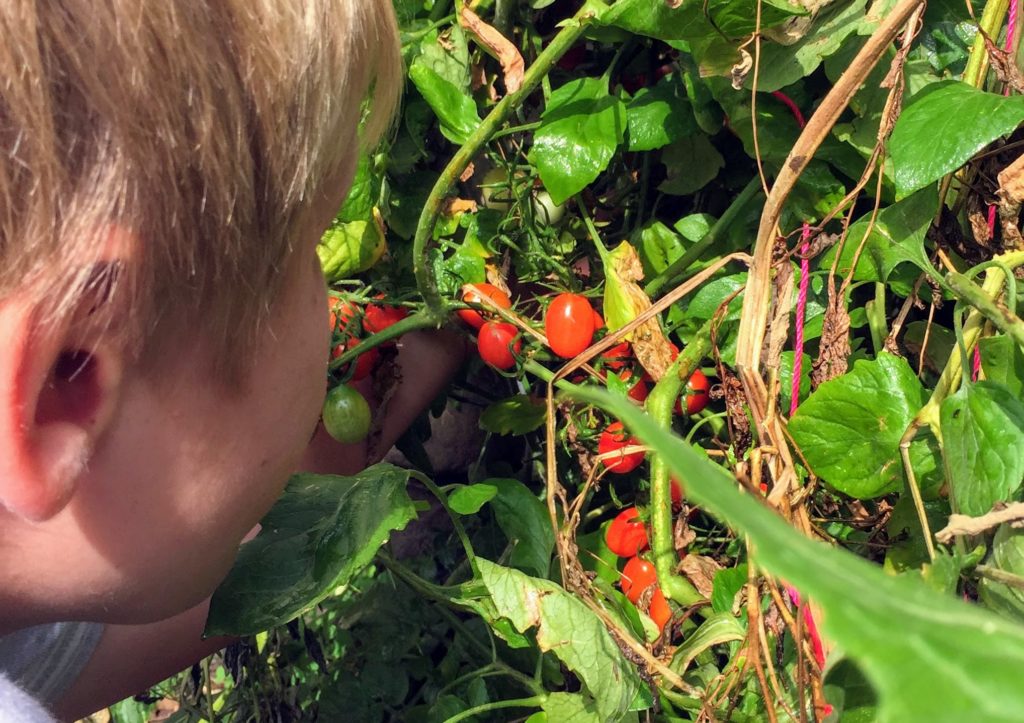
It’s early September and preschoolers around the country are learning about apples, but we have tomatoes at our fingertips. The same tomatoes that we planted in the spring, watered, watched and then forgot about and ignored. But today these plants are full of red, ripe, juicy tomatoes. For the foreseeable future, our curriculum will revolve around tomatoes!
There’s been a lot of talk recently about curriculum themes and how they fit into early childhood education. So much of the learning that takes place in early childhood settings is spontaneous, rather than intentional. This doesn’t mean that early childhood educators shouldn’t be intentional about their curriculum development. They should. But great teachers are always willing to set their planned activities aside to seize a great learning opportunity when it arises.

I call these unplanned learning opportunities “teachable moments.” In so many ways, the child is the curriculum. By observing our early learners closely to see what ignites their curiosity, we can identify and build on the teachable moments that we encounter throughout the day.
Once we’ve identified a teachable moment, we can make the most of these spontaneous early learning adventures (and meet our early learning standards) by sharing our insights and asking questions that encourage children to dig deeper and make more connections as they engage in rich, authentic, hands-on learning that only looks like play.
After we engage in these impromptu investigations with our early learners, we can share the fruits of their learning adventures with parents and administrators, so that they can begin to understand how teachable moments can be harnessed to help prepare young children for the transition to kindergarten and success in the larger arena of life.
Soon, the stores will be filled with crisp, delicious fall apples, which will give rise to many of their own teachable moments, beginning with the letter “A.” But today we have tomatoes, so we’re seizing the moment to harvest, sort, count, compare and investigate nature’s bounty!

It is only through genuine interactions and availability that teachers can identify these moments and act accordingly and spontaneously. Teachable moments require you to “think on your feet” and be flexible enough to stray from your planned path. If children’s interests take them in a direction that you hadn’t anticipated or planned for, you have to be ready to seize the moment and use it as a gift. Follow the joy of your students and your curriculum will develop organically!
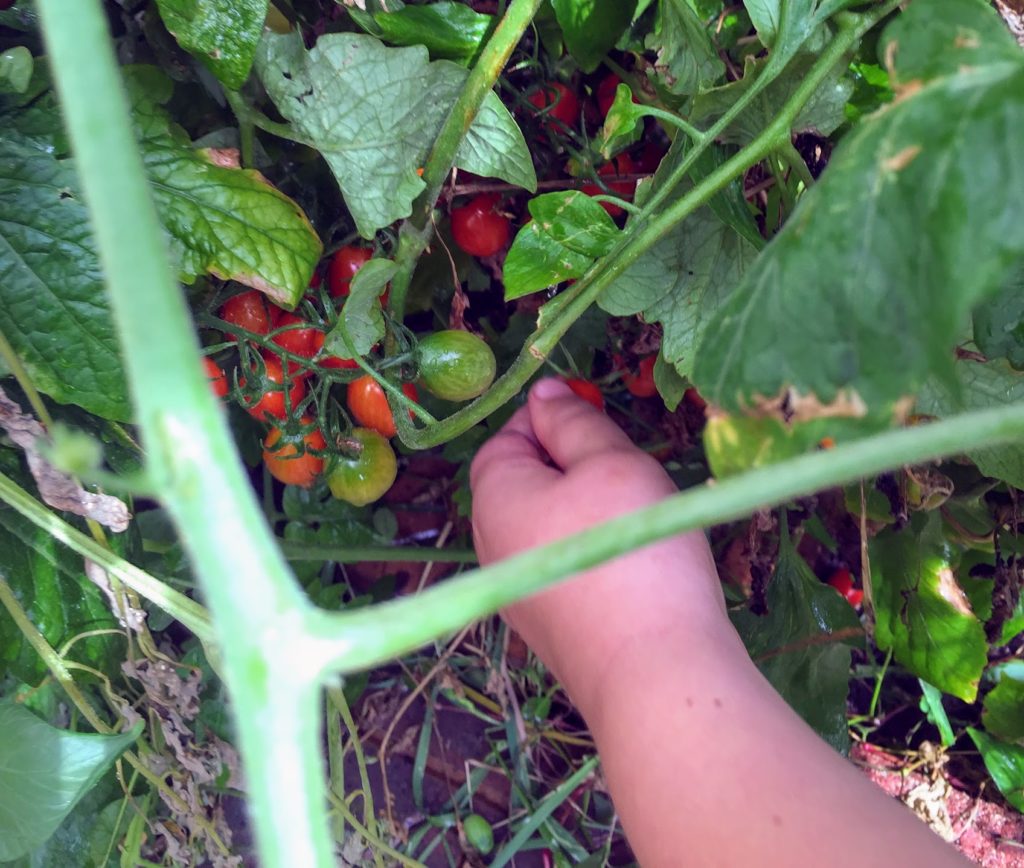
“Look how many tomatoes are growing on this one vine!” Owen exclaims to his friends.
We are now collecting data and comparing attributes. Spontaneous discussions unfold as the children explore topics such as where the sun shines in the morning and which tomato plants get the most sunshine.
But how do the tomatoes ripen and turn red under all of those leaves? By observing, investigating and learning that living things grow and change, the children are building a strong foundation for future learning in earth science and life science.
We keep it simple. This type of learning is always developmentally appropriate because the children’s investigations are guided by each individual’s level of brain development.

“Avery, don’t eat them all!” cries one child as Avery pops a couple of freshly plucked tomatoes into her mouth.
We are exploring the concept of “many vs. few.” But some of the children are too young to care about this concept and just want to experience the sweet deliciousness of a ripe tomato straight from the vine.
Our tomato harvest has all of the hallmarks of a true STEM learning adventure: investigation, discovery, collaboration and discussion. The children are learning through their senses: the visual task of surveying the tomato plants and comparing and categorizing the tomatoes as unripe (green or pale orange) or ripe and ready for harvest (deep orange); the tactile pleasure of separating a plump ripe tomato from its green stem; and the delicious sensation of biting into a tomato, still warm from the sun, and feeling it explode on the tongue. All of the goodness of nature and little brains in motion!
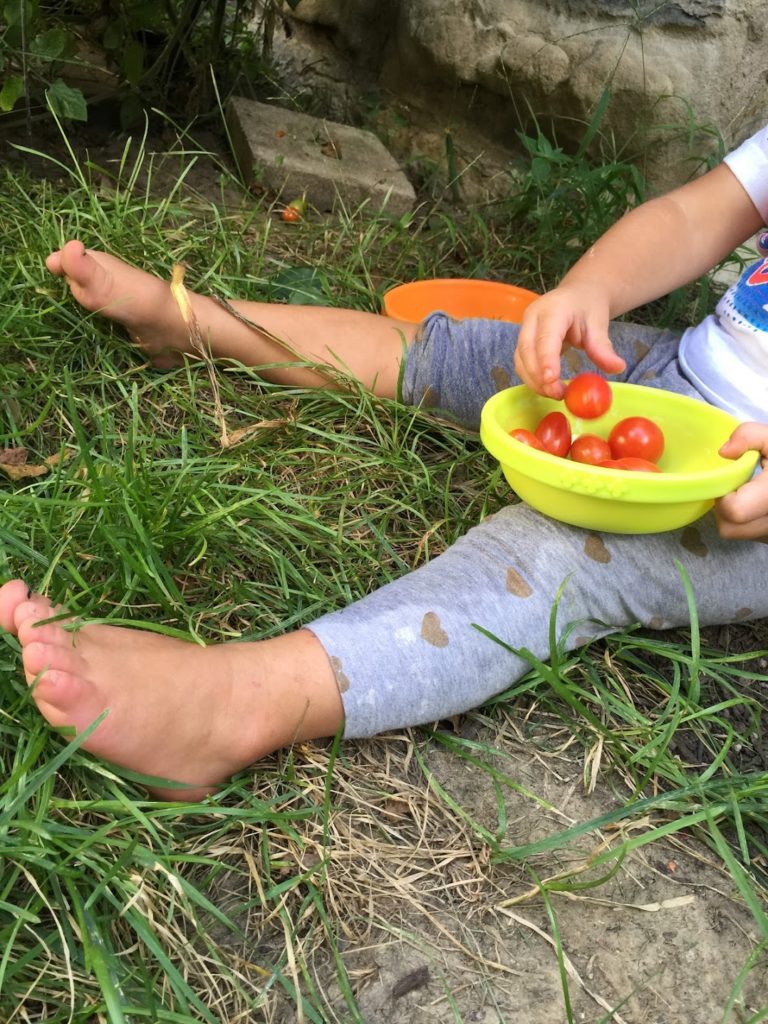
While two-year-old Lauren is more focused on picking the tomatoes and filling her bowl, some of the preschool-age children are busy trying to collect as many as possible. “Look how many I have!” squeals Linnea. “I have more than you!”
As the children explore the physical properties of the tomatoes, we are suddenly counting, estimating, comparing attributes and organizing by color and size. We have vocabulary and math flowing off of the children’s lips, which are stained with the juice of the ripe tomatoes. We are meeting our early learning standards—and the children are developing their own curriculum as they go!
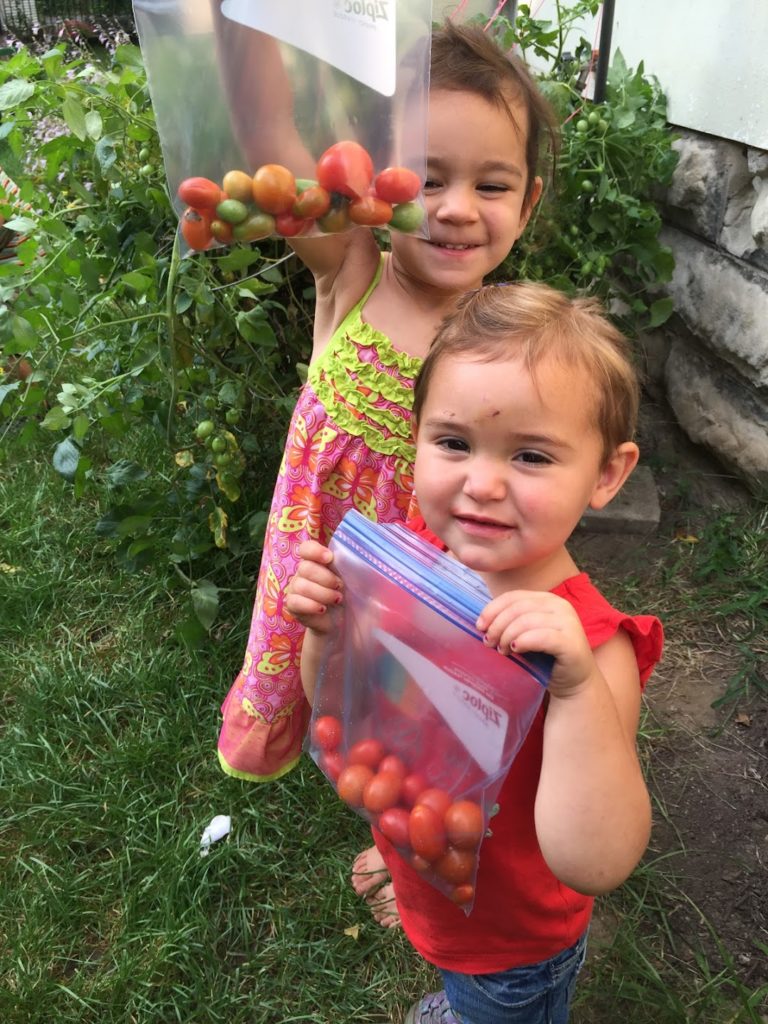
Children construct their own understanding of the world when we provide them with a rich learning environment (in this case, our tomato garden) and ample time to explore, discover and investigate. We want children to think for themselves and not simply follow a preconceived curriculum or theme.
By taking advantage of authentic learning experiences in sensory-rich environments, we are setting the stage for the natural integration of early learning standards and successfully incorporating STEM knowledge into the daily lives of our early learners.
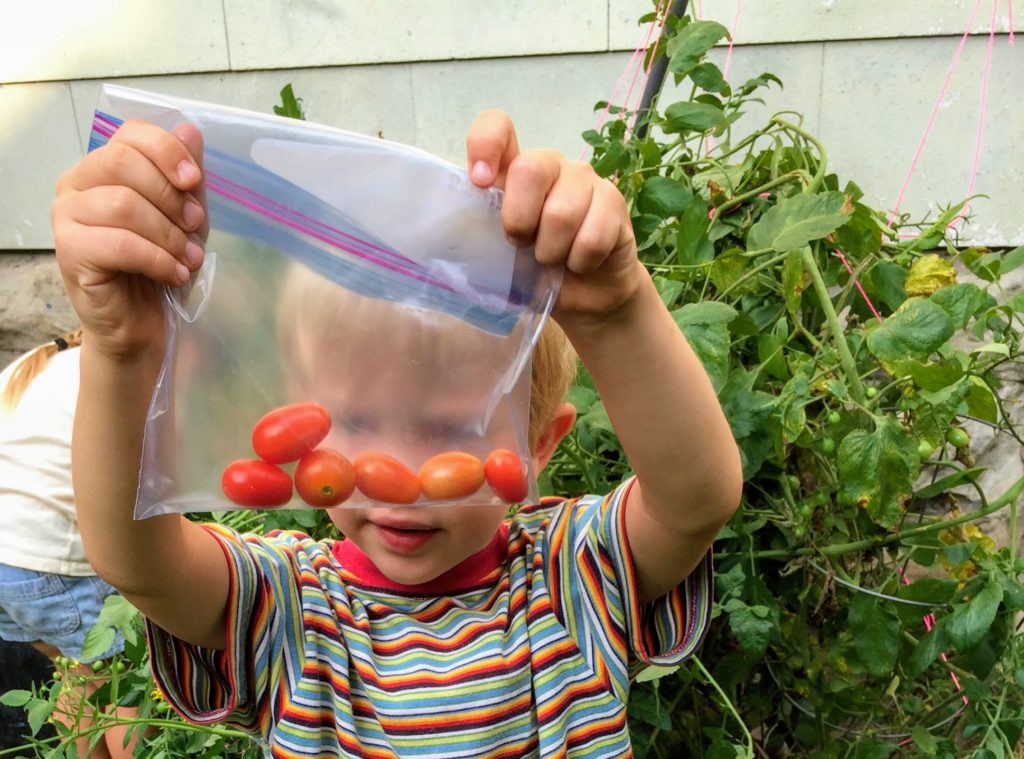
When you foster the development of a creative learning environment where children can find joy in learning, you will discover that your curriculum and lesson themes will spontaneously arise. In other words, let the children lead and the curriculum will follow!
Once the children have “followed their bliss,” introduce the books and thematic materials that support their interests. Build on their energy, enthusiasm and inquisitiveness.
If you head to the tomato garden, I think you’ll agree: early childhood STEM education has never tasted so good!
very interesting info.
Great!